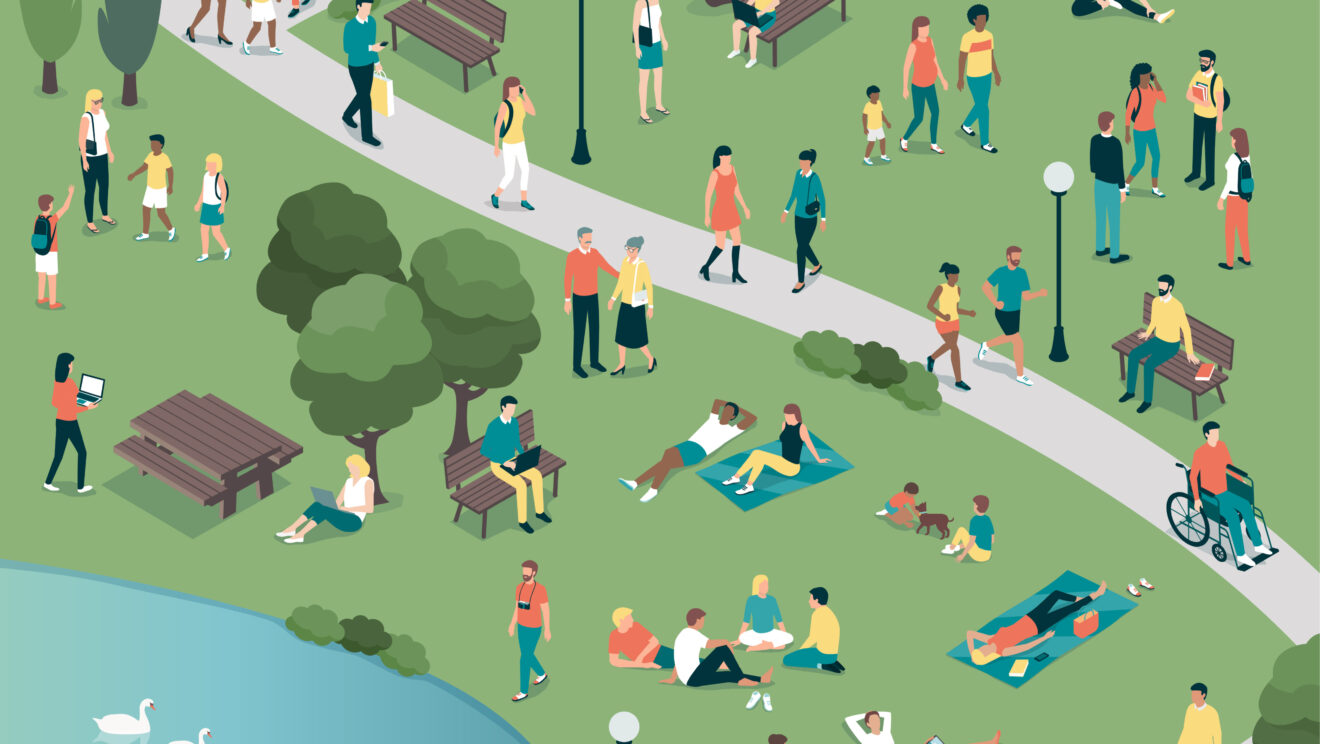Social Connection: A Public Health Imperative

In March of 2020, myself and millions of other graduate students internationally were told to leave campus one day with an uncertain return date. Soon after, we all had to make the quick transition to virtual learning and adapt to this new normal of trying to adhere to COVID-19 social restrictions while also trying to maintain a social life and our well-being. While I didn’t think it would impact my life too much and at times thought it may even be a blessing – I would have more time for work and more time with my dog – these past two years have made it clear how crucial social connection, or lack of, is for my mental health and well-being. Pre-pandemic I would go out to dinner, go to the gym, yoga, movies, and be on campus where I had frequent interaction with others. Many of those things were restricted at the beginning of the pandemic and although the U.S. has eased restrictions, virtual learning and working has become more integrated into my day-to-day life.
While feelings of social isolation and loneliness – separate but often co-occurring issues – were a new experience for me, it is not a new or isolated occurrence. Though it has certainly been exacerbated by the pandemic. Even prior to the pandemic, the estimated prevalence of loneliness and social isolation in adults and adolescents was alarmingly high. As a health psychology Ph.D. student dedicated to understanding the reciprocal influence between social processes and health across the life course, I, like many other researchers and countries, believe there is an urgent need to view social connection as a public health issue. There’s a multitude of research spanning decades showing that social isolation and loneliness influence our mental health, well-being, and predict early all-cause mortality and death from suicide. In addition, countries such as Japan, the U.K., and France have already established public health initiatives to address issues of loneliness and social isolation. Despite the greater awareness and concern that COVID-19 and other countries have generated around these issues, national policies, strategies, and action plans to advance social connection and address the ongoing “loneliness epidemic” in the U.S. are largely missing from the public health agenda.
For instance, The World Health Organization (WHO) recognizes psychosocial circumstances (e.g., social relationships and support) as a social determinant of health and Healthy People 2030 now lists ‘social and community context’ as a social determinant of health. However, neither of these explicitly target social connection or acknowledge its relevance to health across the life course. Further, it is not recognized as a priority health concern by many U.S. government organizations and partnerships. Given all of this, I echo Holt-Lunstad and colleagues (2017) sentiment and question for public health:
“Why are social relationships not adequately acknowledged and what steps may be necessary to update national public health priorities in a manner that is more consistent with the empirical research in this area?”
Because individuals are embedded within communities, within systems, within society, it is critical to conceptualize social connection through an ecological systems life-span perspective. Accompanying this perspective, we need multi-sector, multi-system, equity-focused strategies that consider how systems intersect with other sectors such as housing, transportation, and education, and how these intersections can be used as levers for action.
As we move closer to our conference, I have begun to reflect more on this question in relation to our conference theme, “New Directions for Behavioral Health: Building Socially Connected and Just Communities” and how fostering greater social connection needs to be at the forefront of this mission. Social connection is not just simply about the absence or presence of social relationships, it also comprises the structure, function, and quality of these relationships. And whether we experience adverse or protective effects from social connection largely depend on the communities in which we are embedded. Like many other recognized social determinants of health, our access and ability to connect with others is rooted in the way we design communities and structural injustices that limit opportunities for social interaction. Addressing these structural injustices and prioritizing vital access to opportunities to build social connections and expand social networks can positively impact our social mobility, social capital, and indirectly improve individual and community health.
